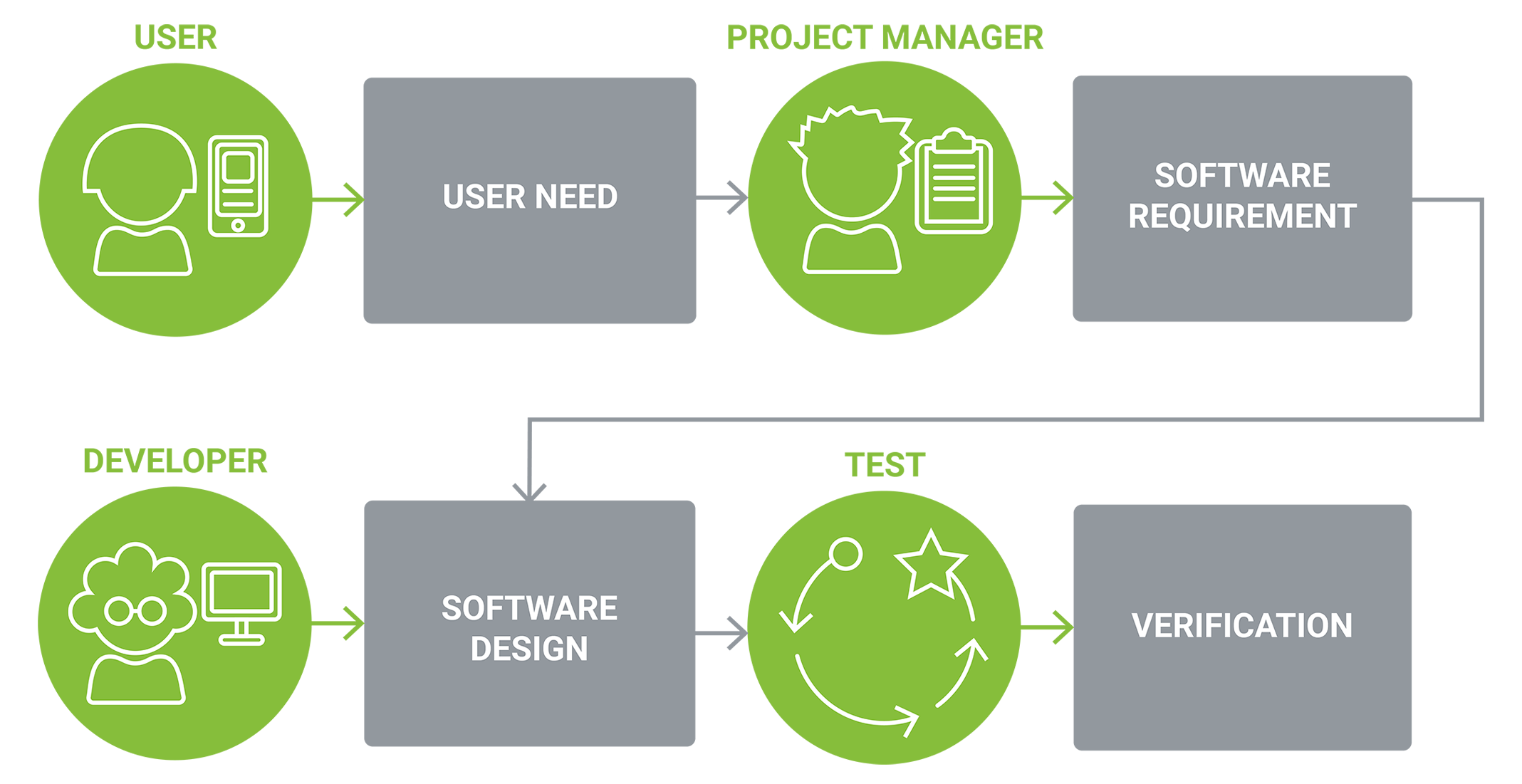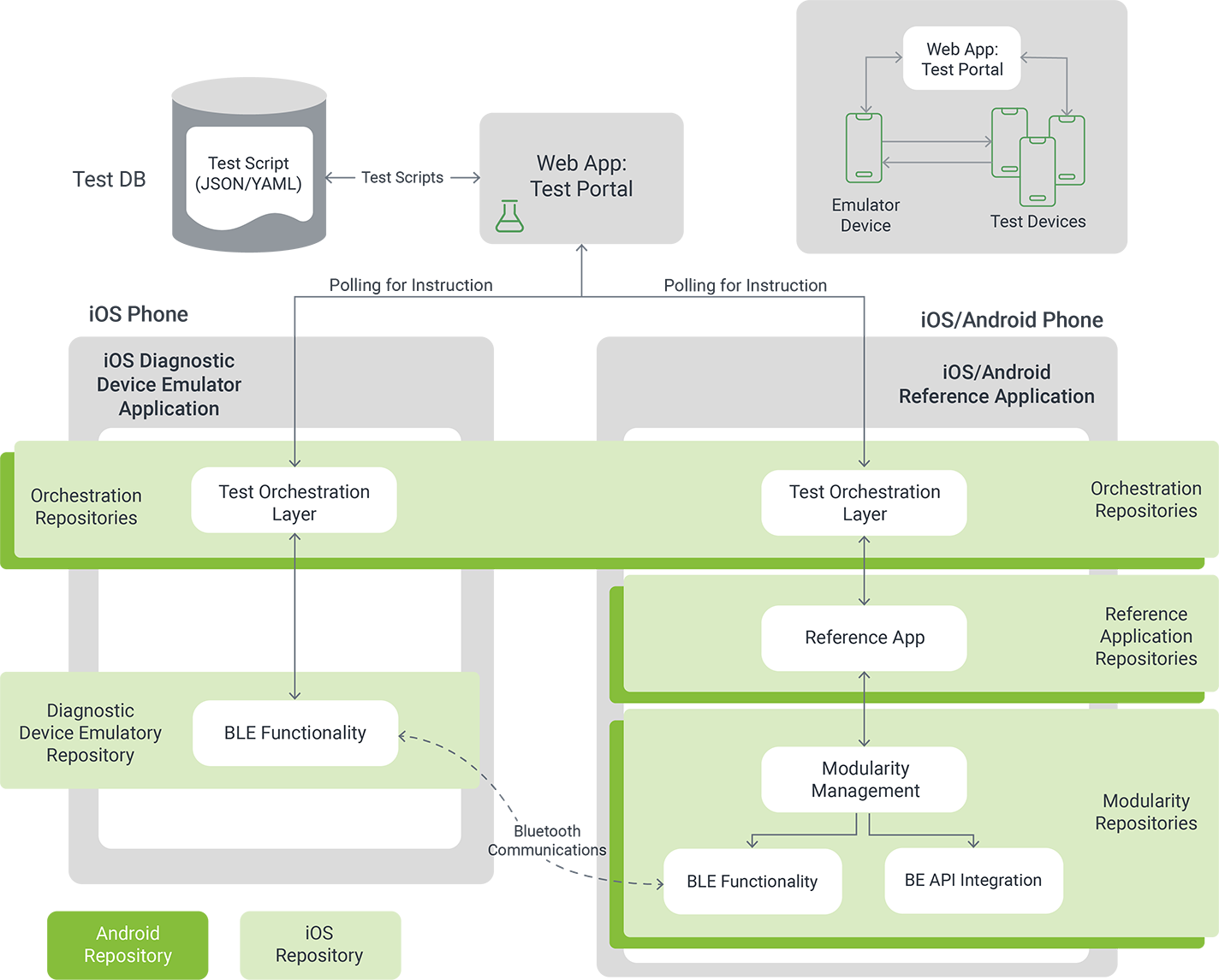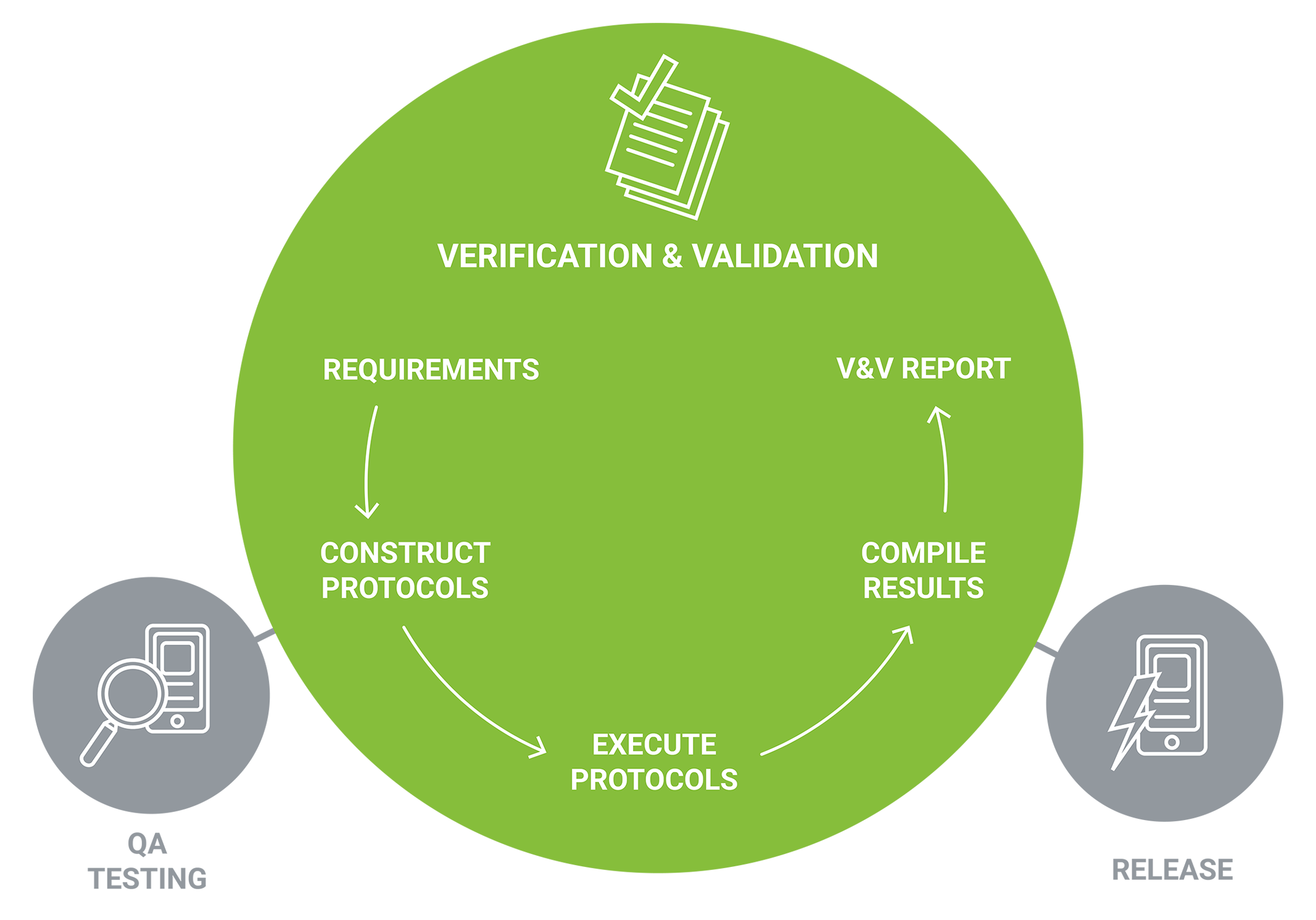Agile + Verification & Validation
Achieving quality at speed with Agile.
Traditional waterfall development saves verification and validation for the end – when they may dredge up critical issues that are time-consuming and expensive to fix. Orthogonal integrates these activities into our Agile software development approach. Leveraging test-driven development (TDD), behavior-driven design (BDD) and testing and documentation automation, we can efficiently and quickly add new features, verify the entire system and speed up release cycles, all while maintaining quality.

User Stories
Tracing user stories from inception to delivery.
Verification starts at the user story level, providing traceability from user story to code, code to unit test and user story to acceptance test. By testing stories as soon as they are implemented, testing teams uncover defects and discrepancies early in the process, when they are easiest to fix and have the least impact on other parts of the system. Identifying and correcting issues incrementally prevents project sprawl.

Testing & Documentation Automation
Less clock time and greater quality.
In Agile, you add features incrementally and test not just that the feature works, but also that the whole system is intact. By automating the acceptance testing, we catch bugs at the moment we incorporate new features, saving significant time. Furthermore, with the right tooling, we can automatically generate verification protocols, test runs and traceability documentation. Testing and documentation automation reduces the amount of time and money spent on design controls and documentation, speeding up releases.

Pre-Verified Components
Verify once, use again and again and again.
Building a SaMD platform? Think pre-verified components. When leveraging components or modules built for one medical device for another – or for an entire suite of SaMD – our process of pre-verifying components, setting up automated testing and building out their verification protocols allows for easy integration and consumption.

Remediation
Need a verification and validation boost?
Orthogonal can perform verification and validation activities for medical device software products as part of remediation services. We’ll not only help remediate existing software, but also set up processes and automation to make continued development more efficient.

